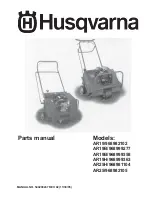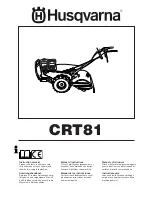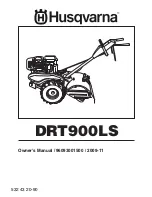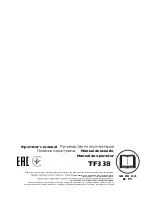
16
Minimum Loop Volume — The preferred minimum loop
volume is equal to twice the water flow rate per ton. (For
example, the preferred water volume for 2.4 GPM/ton would
be 2 x 2.4 = 4.8 gallons in the loop per ton of cooling.) In order
to obtain leaving water temperature stability for comfort cool-
ing applications, a minimum of 3 gallons per ton is required on
all other unit sizes. For process cooling applications, where
high stability is critical, the loop volume should be increased to
6 to 10 gallons per ton of cooling.
In order to achieve this volume, it may be necessary to add a
water storage tank to the water loop. (The compression/
expansion tank on the 30RA hydronic package is NOT a
storage tank. If a storage tank is added to the system, it should
be properly vented so that the tank can be completely filled and
all air eliminated. Failure to do so could cause lack of pump
stability and poor system operation.)
NOTE: On systems with a high volume, check the section on
maximum loop volume. A different expansion tank may be
required on systems with very high loop volumes.
Any storage tank that is placed in the water loop should
have internal baffles to allow thorough mixing of the fluid. See
Fig 17.
A properly baffled storage tank is available from the factory
as an accessory. These tanks are designed to physically fit
beneath the corresponding 30RA unit, taking up the same
footprint.
Available volumes are as follows:
• 30RA010-018 110 gallons
• 30RA022-030 152 gallons
• 30RA032-055 305 gallons
Maximum Loop Volume — Since the minimum size of the
expansion tank is dependent upon loop volume, units with the
integrated hydronic kit must not exceed the maximum loop
volume limits below (see Table 6). The limits are dependent on
the maximum and minimum temperatures of the water, the
maximum and minimum pressures seen by the expansion tank,
and the heat transfer fluid. Expansion tank and maximum loop
volume data is as follows.
30RA010-030
30RA032-055
Volume gal
4.4
10.3
Acceptance Volume gal
3.2
10.3
1
2
3
4
6
5
30
20
10
5
2
1
1
2
3
4
5
6
Flow Rate (L/S)
Heat Exchanger Pressure Drop (KPa)
5
6
7
8
9
10
7
8
9
10
11
25
20
10
5
Flow Rate (L/S)
Heat Exchanger Pressure Drop (KPa)
LEGEND
Fig. 15A — Heat Exchanger Pressure Drop —
30RA010-030 (English)
1
—
30RA010
4
—
30RA022
2
—
30RA015
5
—
30RA025
3
—
30RA018
6
—
30RA030
LEGEND
Fig. 15B — Heat Exchanger Pressure Drop —
30RA010-030 (SI)
1
—
30RA010
4
—
30RA022
2
—
30RA015
5
—
30RA025
3
—
30RA018
6
—
30RA030
LEGEND
Fig. 16A — Heat Exchanger Pressure Drop —
30RA032-055 (English)
7
—
30RA032, 30RA035
10 —
30RA050
8
—
30RA040
11 —
30RA055
9
—
30RA042, 30RA045
LEGEND
Fig. 16B — Heat Exchanger Pressure Drop —
30RA032-055 (SI)
7
—
30RA032, 30RA035
10 —
30RA050
8
—
30RA040
11 —
30RA055
9
—
30RA042, 30RA045













































